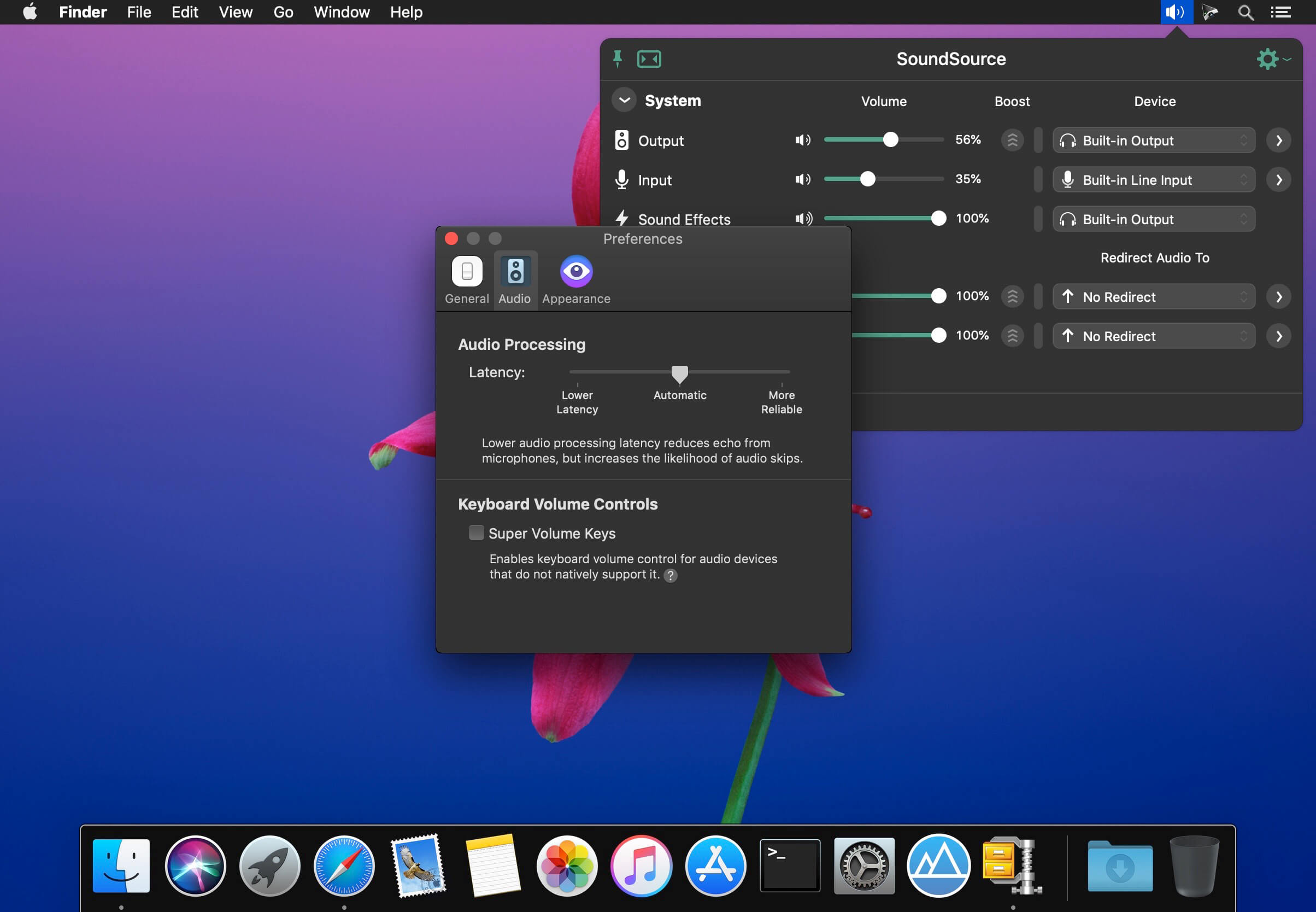

SoundSource's main window is streamlined, but to truly minimize how much space it uses, the Compact view has you covered.Īdd optional meters for your output device, input device, and/or active applications, so you can see and control audio even more easily.
Soundsource license full#
The new Magic Boost 2 does even more to provide rich, full sound from even the tiniest speakers. The new Headphone EQ effect provides the very best sound from thousands of different models of headphones.

Making frequent adjustments? Pin SoundSource's main window, and it will float on your screen for instant access. You can also bring it up with a configurable global keyboard shortcut. SoundSource lives in your menu bar, for one-click access to all your audio controls. SoundSource makes those keys work with any outputs you have.
Soundsource license mac#
HDMI devices, DisplayPort audio outputs, and more fail to support the volume keys found on Mac keyboards. Quickly adjust volume and input levels, balance, and even sample rate for your system's Output, Input, and Sound Effects devices.Īpply effects to sweeten the sound of all audio on your system, with the built-in 10-band equalizer and support for advanced Audio Unit plugins. Use the built-in 10-band equalizer and support for Audio Units to sweeten the sound of individual apps. Route music from one app to your best speakers, while everything else is heard via your Mac's built-in output. Make one app louder or softer than others, or even mute it entirely.Ĭontrol exactly where audio plays. Make any audio sound great, with powerful built-in effects, as well as advanced Audio Unit support.Īdjust volume levels for each of your applications, all in one place. With SoundSource, you get fast access to your Mac's most important audio settings.Ĭontrol the settings for your Mac's Output, Input, and Sound Effects audio devices right from your menu bar.Ĭhange the volume of any app relative to others, and send individual apps to different audio outputs. Enable soft play-thru of input devices to your desired output, so you can hear sound coming in through any microphone or other source. We conclude that, contrary to canonical models of sensory encoding, the primary motive of early spatial processing is efficiency optimization of neural populations for enhanced source separability in the concurrent environment.SounceSource lets you adjust your input, output, and sound-effects devices and volume settings in mere moments, right from the menu bar. These location-specific enhancements in neuronal coding were paralleled by human listeners exhibiting a selective improvement in spatial resolution.

Strikingly, such “efficient cooperative coding” also improved neuronal source separability specifically for the locations that were most likely to occur. Intrinsic LSO population imaging of energy consumption combined with pharmacology revealed that a slow-acting LSO gain control mechanism distributes activity across a group of neurons during DRA, thereby enhancing population coding efficiency.

However, when considering single-trial population averages of multiple neurons, DRA enhanced the coding efficiency specifically for the concurrently most probable source locations. Surprisingly, on the level of individual neurons, DRA diminished spatial tuning due to large response variability across trials. Naturalistic spatial stimulation with dynamically changing source locations elicited prominent DRA already on the initial spatial processing stage, the Lateral Superior Olive (LSO) of gerbils of either sex. Here we investigated the impact of DRA on spatial coding in the rodent brain and the perception of human listeners. However, direct demonstrations of DRA-based efficient neuronal processing that also produces perceptional benefits are lacking.
Soundsource license code#
Such dynamic range adaptation (DRA) is assumed to increase both the effectiveness of the neuronal code and perceptual sensitivity. Accordingly, neural systems continually adapt to the concurrent stimulus statistics to remain sensitive over a wide range of conditions. Our sensory environment changes constantly.


 0 kommentar(er)
0 kommentar(er)
